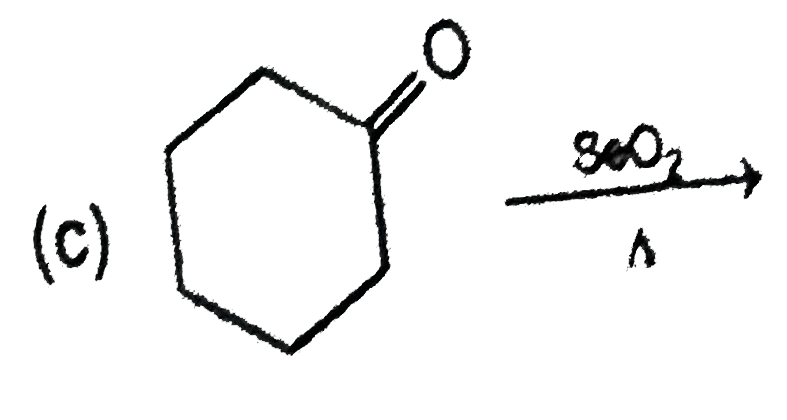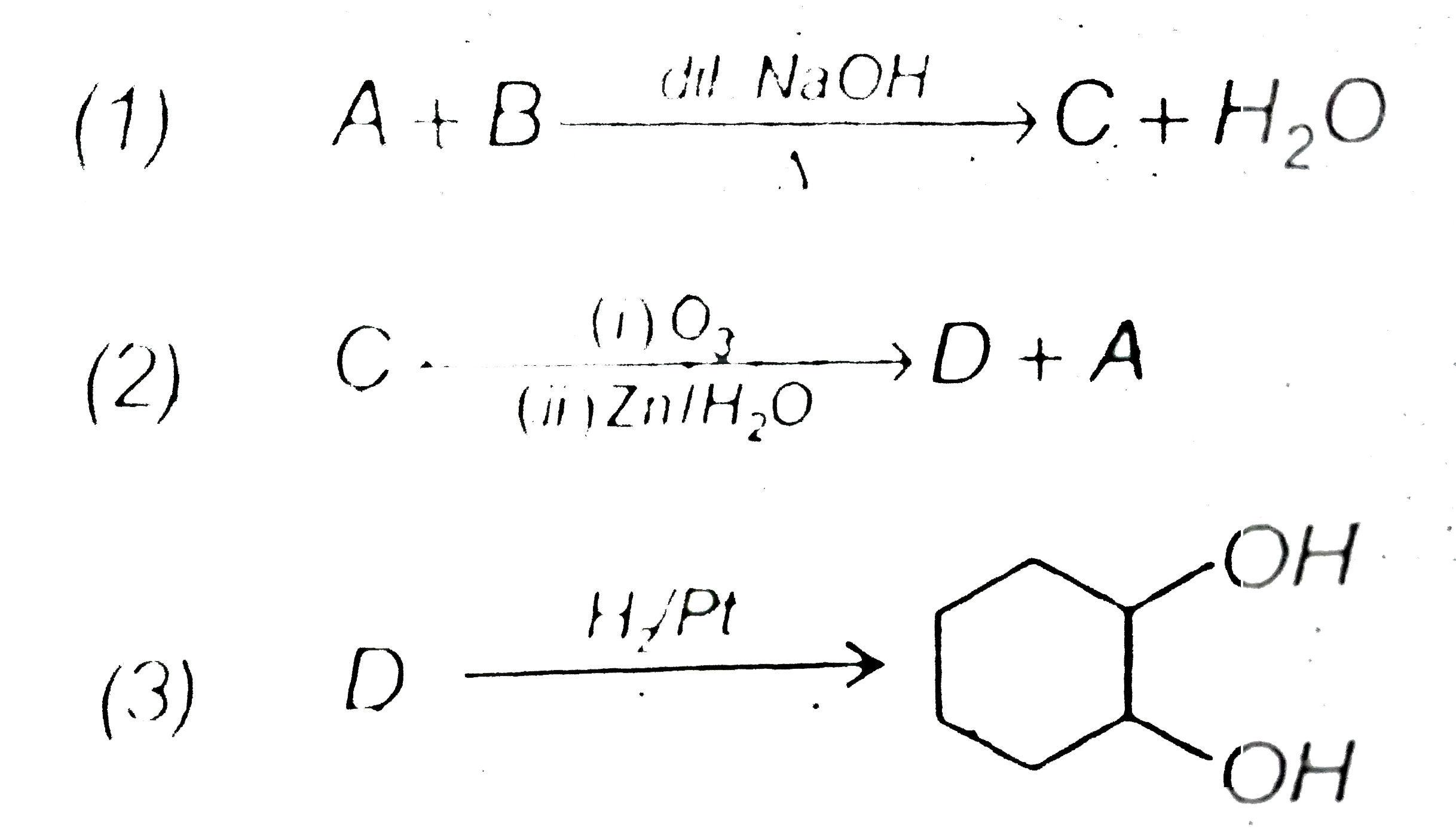Identify A,B,C,….. in the given reaction sequence .
D(i)NaOH←−−−−−−−−(ii)H+CP/Br2←−−−−−−excessCH3COOHSOCl2−−−→AR−−→CH3CHOdil. NaOH−−−−−−−→ΔB
To identify the compounds A, B, C, D, and R in the given reaction sequence, we will analyze each step carefully.
1. Identify D: The reaction starts with a carboxylic acid, which is acetic acid (CH₃COOH). This is our compound D.
2. Formation of C: The first reaction involves treating acetic acid with phosphorus bromide (PBr₂) in excess. This is a Hell-Volhard-Zelinsky (HVZ) reaction, which brominates the alpha carbon of the carboxylic acid. The product formed will be 2-bromoacetic acid (C). Thus, C = CH₂BrCOOH.
3. Formation of A: Next, the 2-bromoacetic acid (C) is treated with NaOH, which replaces the bromine atom with a hydroxyl group (OH), leading to the formation of 2-hydroxyacetic acid. However, upon dehydration, it forms oxalic acid (A). Thus, A = HOOC-COOH (oxalic acid).
4. Identify R: The next step involves treating the oxalic acid (A) with hydrogen gas (H₂) in the presence of palladium (Pd) and barium sulfate (BaSO₄). This is a Rosenmund reduction, which will convert the acid chloride into an aldehyde. The product will be acetaldehyde (B). Thus, R = H₂/Pd/BaSO₄.
5. Formation of B: Finally, acetaldehyde (B) is treated with dilute NaOH and heated. This leads to an aldol condensation reaction, where two molecules of acetaldehyde react to form 3-hydroxybutanal, which can dehydrate to form crotonaldehyde (B). Thus, B = CH₃CH=CHCHO.
Summary of Identifications:
- D = CH₃COOH (Acetic Acid)
- C = CH₂BrCOOH (2-Bromoacetic Acid)
- A = HOOC-COOH (Oxalic Acid)
- R = H₂/Pd/BaSO₄ (Rosenmund Reduction Reagent)
- B = CH₃CH=CHCHO (Crotonaldehyde)
- D = CH₃COOH (Acetic Acid)
- C = CH₂BrCOOH (2-Bromoacetic Acid)
- A = HOOC-COOH (Oxalic Acid)
- R = H₂/Pd/BaSO₄ (Rosenmund Reduction Reagent)
- B = CH₃CH=CHCHO (Crotonaldehyde)
Topper's Solved these Questions
- BOOK - VMC MODULES ENGLISHCHAPTER - ALDEHYDES,KETONES & CARBOXYLIC ACIDS EXERCISE - EXAMPLE 119videos
ALDEHYDES,KETONES & CARBOXYLIC ACIDS
- BOOK - VMC MODULES ENGLISHCHAPTER - ALDEHYDES,KETONES & CARBOXYLIC ACIDS EXERCISE - IN-CHAPTER EXERCISE-A10videos
ALDEHYDES,KETONES & CARBOXYLIC ACIDS
- BOOK - VMC MODULES ENGLISHCHAPTER - ALCOHOLS, PHENOLS & ETHERSEXERCISE - Impeccable100videos
ALCOHOLS, PHENOLS & ETHERS
- BOOK - VMC MODULES ENGLISHCHAPTER - AMINESEXERCISE - IN CHAPTER EXERCISE H10videos
AMINES
Similar Questions
In the given reaction sequence
CH3CHO(i)NaCN/HCl−−−−−−−−−−−−→(ii)H2O+(A)Fenton−−−−−−→reagent(B), B will beView Solution(B)ΘOH←CH2=CH−CHOAI(OEt)3−−−−−−→(A)
View SolutionHNO3/H2SO4−−−−−−−−→ANaOH−−−−−→433KB, B is
 View Solution
View SolutionIn the following reaction sequence Y is,
PhOCOCH3AlCl3−−→Δ(X)I2−−−→NaOH(Y)View SolutionComplete the following
(a) CH3−CHOSeO2−−→Δ, (b) H3C−CH2−O∣∣C−CH3SeO2−−→Δ, (c) View Solution
View SolutionIn the given reaction sequence
C6H5CHO+CH3−NO2(i)NaOH(ii)Δ−−−−−−−−−−→[X]
[X] will beView SolutionIn the given reaction sequences the final product 'C' is
CH3−CH2−OH(i)KMnO4/−OH/Δ−−−−−−−−−−−−−−−→(ii)H2O+(A)(i)SOCl2−−−−−−−−→(ii)NH3(B)Br2/KOH−−−−−−→(C)View SolutionF3C−CH=CH2HBr−−→(A)Nal−−−−−−−−−→dry.acetone(B)
View SolutionIn the reaction sequence
CH3−O∣∣C−H−HCN−−−→.ΘOH(A)H2O/⊕H−−−−→Δ Product is/are :View SolutionIdentify A-D in the following reactions .

(1) A+BdilNaOH−−−−−→ΔC+H2O
(2) CdilNaOH−−−−−−−→(ii)Zn/H2OD+A
(3) View Solution
View Solution
